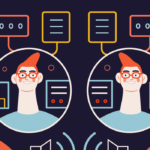The conversion stage is a pivotal moment in your marketing funnel: The developer is on the verge of making a critical decision about whether to buy into your solution. So, content produced for this funnel stage is of high importance.
In contrast to the evaluation stage, where developers consider solutions to their challenges and search for guiding information, the conversion stage is where they dive into the nitty-gritty of a particular solution. Here, your audience will focus on narrowing down choices and expect detailed insights about your product’s functionalities and benefits.
The core of the conversion stage is persuasive and technical content. It’s not just about showcasing features. Crafting a compelling narrative resonates with a developer’s needs. Whether it’s in the form of in-depth documentation, immersive case studies, or impactful demos, content produced for this stage provides the roadmap leading developers toward their final decision to use your product.
This article will explore techniques for creating impactful, solution-based content that converts your developer audience to customers.
What Does the Conversion Stage Look Like?
First, there was awareness, then evaluation. Conversion marks the final stage of the developer marketing funnel. In the awareness stage, developers are discovering your product or solution. Then, in the evaluation stage, they’re actively considering your product and weighing it against others on the market. Now that they’ve arrived at the conversion stage, it’s time to seal the deal and provide them with the intricate details to assure them that your product is the right choice.
We’ve already written about how these three funnel stages flow together and require specific types of content. Next, if you haven’t already, catch up on the previous two articles in this series, “Igniting Curiosity: Building Awareness Stage Content for Developers” and “Informed Choices: Guiding Developers in the Evaluation Stage,” where we dive into the awareness and evaluation stages in more detail.
In this final part of the series, we’ll dive into the conversion stage and how to create content that resonates with developers at this pivotal juncture.
If the previous marketing funnel stages are a broad canvas of potential solutions, then the conversion stage is all about fine-tuned evaluation. Armed with a curated list of tools and knowledge acquired during the evaluation stage, developers are now on the brink of committing. Now, they’re performing analysis and detailed comparisons of the solutions to determine the best choice.
In response, the conversion stage must offer deep-dive content: articles and documentation that reveal your product’s full scope and potential. Developers crave technical depth, real-world use cases, and a transparent understanding of how your product aligns with their needs. Therefore, content written for this stage must be highly detailed, straightforward, and demonstrate results.
Solution-Based Articles
Solution-based articles play an essential role in the conversion stage of the developer marketing funnel. Offering targeted insights into a product’s specific benefits, these articles act as strategic guides, aligning with the developer’s needs and concerns as they decide which tooling they’ll adopt.
Honing in on your product’s unique selling points is critical when crafting solution-oriented articles. Highlight how your offering resolves the challenges and alleviates the pain points plaguing your audience and demonstrate how it enhances their existing workflows, being as specific and detailed as possible.
Below are some strategies for constructing compelling solution-based articles:
-
Detail successful scenarios where your product has effectively addressed common developer issues. If you’ve published case studies where your product has significantly benefited one of your clients, include links to those resources — and, better yet, quotes from customers that reiterate your product’s value. Be sure to emphasize your solution’s practical advantages and unique selling points.
-
Provide a comprehensive breakdown of your product’s features and functionalities. Create high-level and hands-on articles demonstrating how these products stand out in the competitive landscape.
-
Craft compelling narratives that speak to informed industry insiders. These pieces should dive into the nitty gritty of your product, describe how it’s different from other products on the market, and showcase features that might otherwise fly under the radar.
Deep-Dive Tutorials
Hands-on tutorials that delve deeply into solutions play a pivotal role in the conversion stage of the developer marketing funnel. Because these articles go beyond high-level overviews and take readers on an interactive journey, they enable readers to experience your product’s capabilities and potential uses firsthand.
This real-world application gives developers a profound understanding of how your product will work in practical situations, fostering confidence in and familiarity with the tool.
Let’s review some tactics for creating influential deep dive tutorials.
Go Beyond the Basics
When crafting tutorials, go beyond the basics of how your solution works. While guides for navigating the UI and performing basic functions are helpful in the early stages of the developer marketing funnel, tutorials created for the conversion stage should explore advanced features and complex functionalities.
Create tutorials — or even a series of tutorials — that effectively showcase the depth and buildability of your solution.
Showcase Novel Solutions
The people who know your product and its capabilities best are your in-house specialists: developers, engineers, and other teams directly involved in building your tool or service. Take advantage of this expertise by showcasing novel solutions pioneered in-house. These subject matter and solution experts can surface your product’s unique, innovative capabilities.
This is also a boon to your organizational reputation since it shows the developer community that you’re committed to exploration internally, too.
Leverage Multimedia Content
Hands-on content created for the conversion stage can go beyond written tutorials. You can leverage multimedia content, like videos and webinars, to develop detailed product walkthroughs. Exploring different forms of media can create rich and engaging learning experiences for developers.
And if you can host live events, even better — this way, developers can ask you questions in real time.
Demonstrate Common Use Cases
Create hands-on guides showing use cases for the product the customer will likely encounter. These could be documentation-esque, with clear numbered steps in a more straightforward tone, or they could be more tutorial-style, where you walk the reader through different processes as a peer.
Guides featuring everyday use cases show your developer audience that you’re aware of what they’re likely using your product for and that you’re committed to helping them through the adoption process. Plus, having these resources available can be a substantial selling feature, as they can shave off valuable time lost to teams trying to familiarize themselves with your solution.
Provide Integration Guides
These guides offer detailed explorations of integrating the product into popular tech stacks. Because developers are trying to imagine using your tool within their current development workflow, it’s essential to make the process as easy as possible. Clearly document native integrations, outlining how to integrate tools without native support into various development environments.
Another idea is to create guides demonstrating how to optimize existing development environments to incorporate the product. Again, the goal here is to show prospective users how seamless getting started would be — and that you’re there to support them throughout the process.
Case Studies: Demonstrating Real-World Effectiveness
Case studies are another instrumental tool to influence developers during the conversion stage. These narratives offer tangible evidence of a product’s prowess in the real world, serving as compelling testimonials showcasing how the solution addresses specific challenges.
By dissecting practical applications and demonstrating measurable outcomes, case studies provide a roadmap for potential adopters, instilling confidence in the product’s effectiveness.
Strategies for creating high-impact case studies include:
-
Sharing stories of satisfied customers — Offer authentic testimonials that showcase the product’s real-world efficacy and reliability. Link to published case studies containing client success stories where possible.
-
Incorporating data and metrics to measure the product’s success — It’s vital to substantiate the claims made with hard facts.
Next Steps
This article explored several strategies to create high-impact content for the conversion stage in the developer marketing funnel. From deep-dive hands-on tutorials to solution-based articles and high-level (but detailed!) case studies to video content, you can use all kinds of content to demonstrate your product’s value.
Creating high-quality content for the conversion phase is vital. Because your developer audience is ready to commit, your content should demonstrate why your product is the right choice. Developers are looking for reassurance that they’re making the right decision — so lead with detailed and solution-oriented pieces to build their confidence.
Remember, the conversion stage is your final opportunity to connect with developers and prove to them that your solution will deliver what it promises. When you craft conversion content effectively, you convert an interested developer into a loyal customer.
Don’t take a chance on sealing the deal. Engage with ContentLab to craft high-impact, high-return content.





